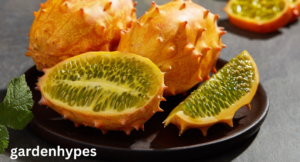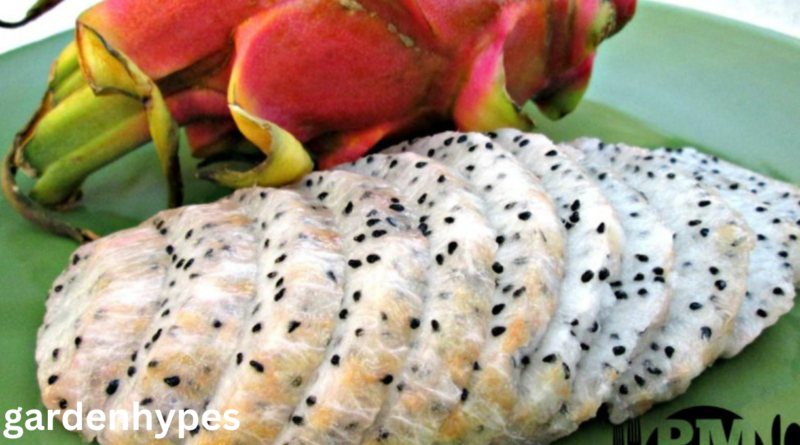Fruits That Look Like Dragon Fruit Nature’s Colorful Twins
1. Introduction
Fruits That Look Like Dragon Fruit, also known as pitaya, is one of the most eye-catching fruits in the world. With its fiery pink skin, green leafy spikes, and speckled white or red flesh filled with tiny black seeds, it looks like something straight out of a fantasy world. This unique appearance often makes people think it has no rival in the fruit kingdom. However, when you look closer, nature has given us a whole range of exotic fruits that can easily be mistaken for dragon fruit at first glance.
click in link Fuzzy Fruit
Have you ever picked up a rambutan or a prickly pear and thought, “Wow, this looks just like dragon fruit!”? You’re not alone. Many fruits share similar colors, textures, or even growth patterns with dragon fruit, and that’s what makes exploring them so exciting.
In this article, we’ll dive deep into fruits that resemble dragon fruit in one way or another. Some share its spiky skin, while others have a similar vibrant color palette or even seed-filled flesh that mirrors dragon fruit’s famous look. By the end, you’ll not only recognize these fruits but also understand what makes them special in their own right.
2. What Makes Dragon Fruit So Unique?
Before we explore the look-alikes, let’s first understand why dragon fruit stands out so much. Belonging to the cactus family, dragon fruit comes from a climbing cactus plant that thrives in tropical and subtropical regions. It originated in Central America but has spread to Asia, where countries like Vietnam, Thailand, and the Philippines now grow it extensively.
Dragon fruit has several varieties, mainly distinguished by the color of their flesh and skin:
- White-fleshed dragon fruit (Hylocereus undatus): Pink skin with white flesh.
- Red-fleshed dragon fruit (Hylocereus costaricensis): Pink skin with deep red flesh.
- Yellow dragon fruit (Hylocereus megalanthus): Yellow skin with white flesh.
What makes dragon fruit especially fascinating is its combination of features:
- Its brightly colored skin looks almost neon.
- The scaly or leafy spikes around its body give it a fiery appearance.
- Inside, its flesh is dotted with tiny edible black seeds, similar to a kiwi.
When you cut into a dragon fruit, it’s like opening a treasure chest—it surprises you with a vibrant contrast between the outer skin and the inner flesh. This dramatic look makes it a natural standout, and that’s why any fruit that shares even one of these traits tends to remind people of dragon fruit.
3. Fruits That Look Like Dragon Fruit
Dragon fruit’s dramatic appearance sets the stage for many “fruit doppelgängers” across the globe. While none of them are identical, quite a few share its defining characteristics, such as bright skin colors, spiky exteriors, or even similar cactus-like origins.
When you think of fruits that resemble dragon fruit, some may strike you immediately because of their exotic skins, while others may only show similarities when cut open. For example:
- Rambutan looks spiky like dragon fruit but has hair-like growths instead of leafy scales.
- Prickly pear, another cactus fruit, has a smooth yet colorful exterior and seed-filled flesh that feels very dragon fruit-like.
- Passion fruit might not have the spikes, but its juicy, seed-filled interior gives it a resemblance when compared side by side.
The beauty of these look-alike fruits lies not only in their appearances but also in the cultural and culinary experiences they bring. Each has its own unique flavor profile, yet they all share the same exotic appeal that makes dragon fruit such a favorite among food lovers and Instagram enthusiasts.
click in link Fuzzy Fruit
4. Pitaya vs. Pitahaya: The True Dragon Fruit Cousins
Here’s where things get a little tricky. Dragon fruit is often called pitaya or pitahaya, depending on the region. While many people think they are two different fruits, they are actually part of the same cactus family.
- Pitaya (Stenocereus) usually refers to the sourer varieties of cactus fruit found in Mexico. These fruits have similar spiky exteriors but can be less sweet.
- Pitahaya (Hylocereus) refers to the sweeter dragon fruits commonly found in Asia and other parts of the world. These are the fruits most people recognize as dragon fruit.

Both pitaya and pitahaya share the following characteristics with dragon fruit:
- A cactus origin, meaning they thrive in similar climates.
- A spiky or scaly outer skin.
- Seed-filled, juicy flesh that can be eaten raw.
This close relationship makes pitaya one of the most convincing “dragon fruit look-alikes.” In fact, some people even argue that dragon fruit itself is just a fancy variety of pitaya. Whether you agree or not, there’s no denying their striking resemblance.
5. Kiwano (Horned Melon): The Spiky Look-Alike
If there’s one fruit that can compete with dragon fruit in terms of unique looks, it’s the kiwano melon, also called the horned melon or African horned cucumber. On the outside, it has a bright orange-yellow skin covered with sharp, horn-like spikes, making it appear just as exotic as dragon fruit.
When you cut open a kiwano, the resemblance deepens. Its interior is filled with a jelly-like green flesh studded with seeds, reminding many people of dragon fruit’s seed-speckled texture. The bright contrast between its spiky outer shell and its refreshing interior makes it one of the closest visual cousins to dragon fruit.

Flavor-wise, kiwano is slightly tangy, often described as a cross between cucumber, kiwi, and banana. While its taste is milder compared to the subtly sweet dragon fruit, both fruits share the same refreshing, hydrating qualities, making them popular choices in smoothies and exotic fruit salads.
From a nutritional perspective, both dragon fruit and kiwano are low in calories but rich in vitamin C, antioxidants, and hydration benefits. So, if you’re looking for a dragon fruit alternative that looks just as wild on the outside and equally fascinating on the inside, kiwano definitely fits the bill.
click in link Fuzzy Fruit
FAQs
- What fruit is most similar to dragon fruit?
The cactus pear, also known as prickly pear, is one of the fruits most similar to dragon fruit. Both come from cactus plants and share a colorful skin with a seed-filled interior. Rambutan and kiwano are also often compared because of their unique, spiky exteriors. - Is rambutan related to dragon fruit?
No, rambutan is not directly related to dragon fruit. Rambutan belongs to the soapberry family, while dragon fruit comes from the cactus family. However, people often compare them because both have unusual, spiky skins that make them look exotic. - Can you confuse cactus pear with dragon fruit?
Yes, it’s possible to confuse cactus pear with dragon fruit, especially if you only look at the outer skin. Both fruits have bright colors and grow from cactus plants. However, cactus pear is usually smaller and its skin is less leafy and more smooth compared to dragon fruit. - Which fruit looks like a mini version of dragon fruit?
Lychee is often called a mini dragon fruit because of its rough, spiky-looking skin and juicy, translucent interior. Even though it is much smaller, its exotic appearance makes it resemble dragon fruit in some ways. - Is dragon fruit healthier than its look-alikes?
Dragon fruit is packed with antioxidants, vitamin C, fiber, and hydration benefits, making it very healthy. However, its look-alike fruits like kiwano, prickly pear, and rambutan also have impressive nutritional profiles. The “healthiest” option depends on your diet and what nutrients you need most.
Fruits That Look Like Dragon Fruit Nature’s Colorful Twins

